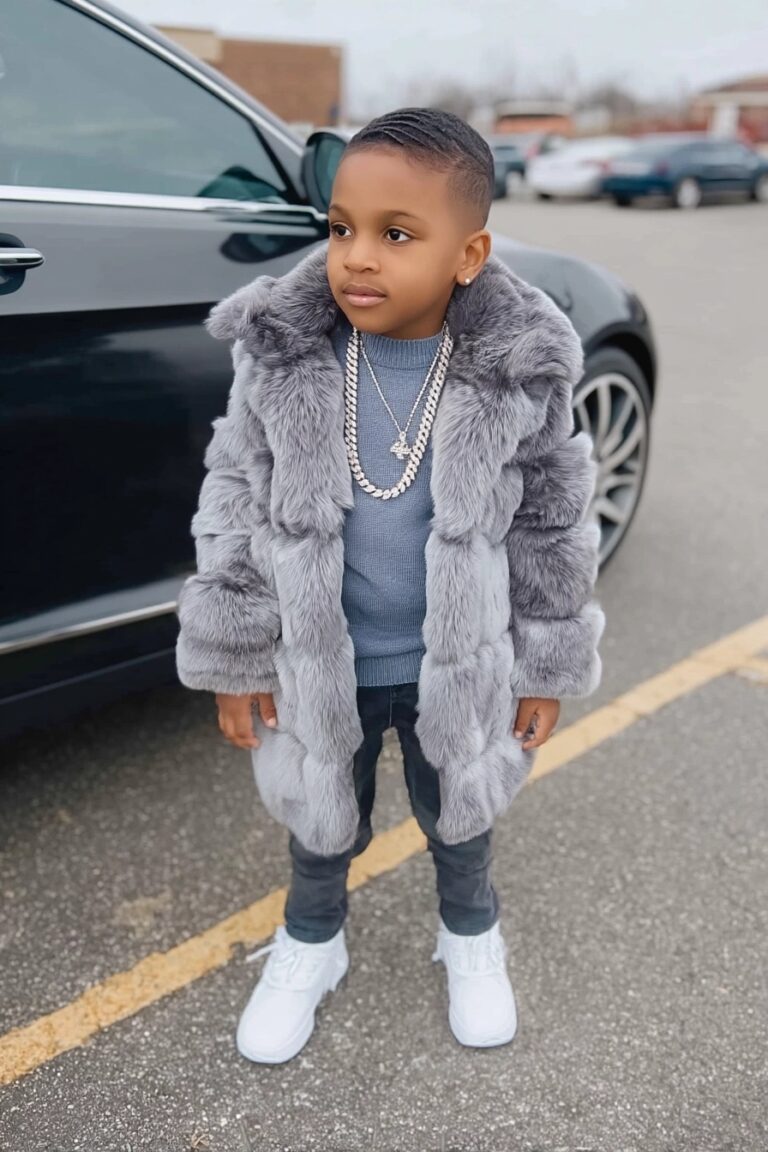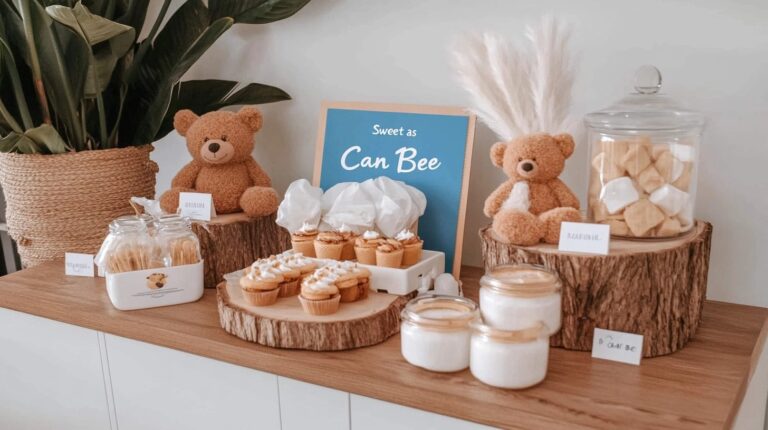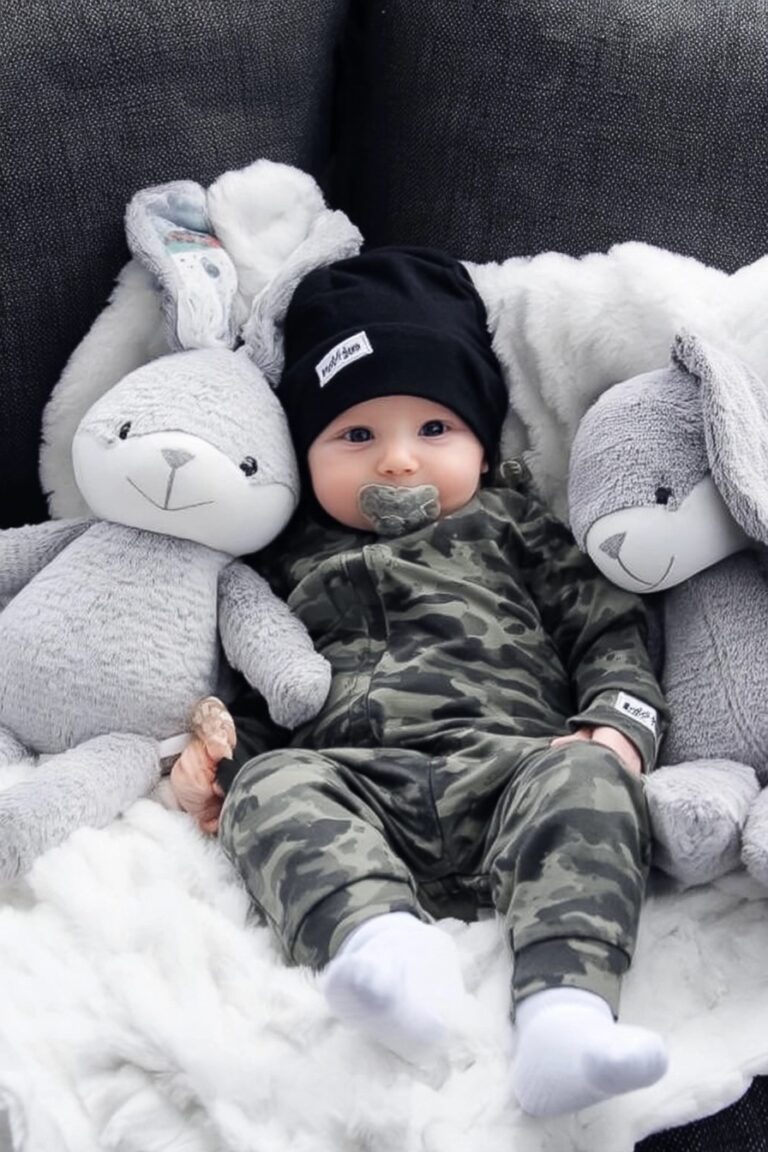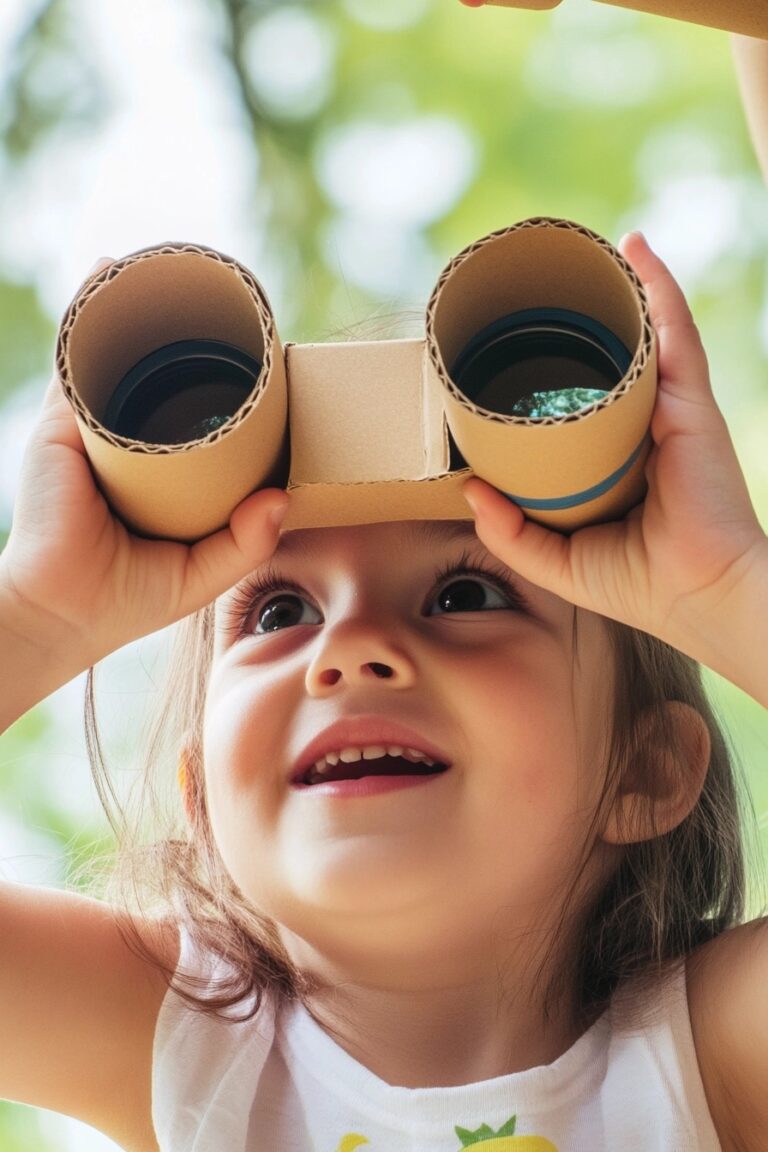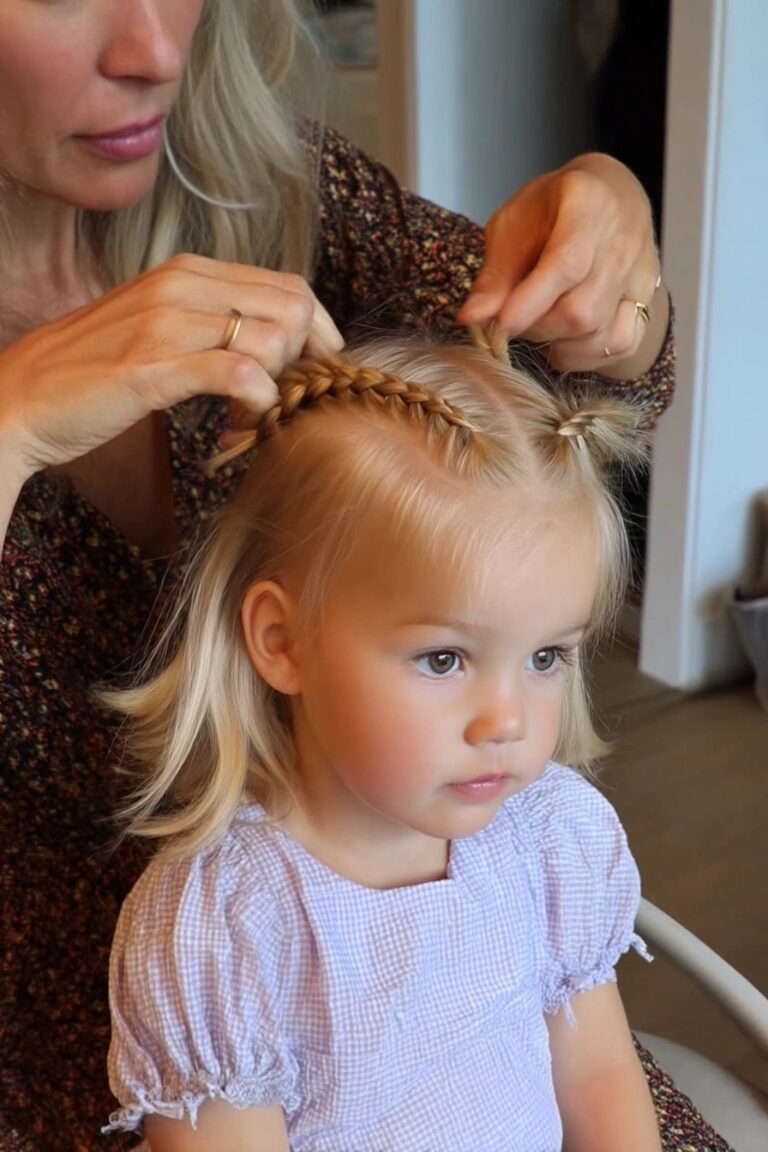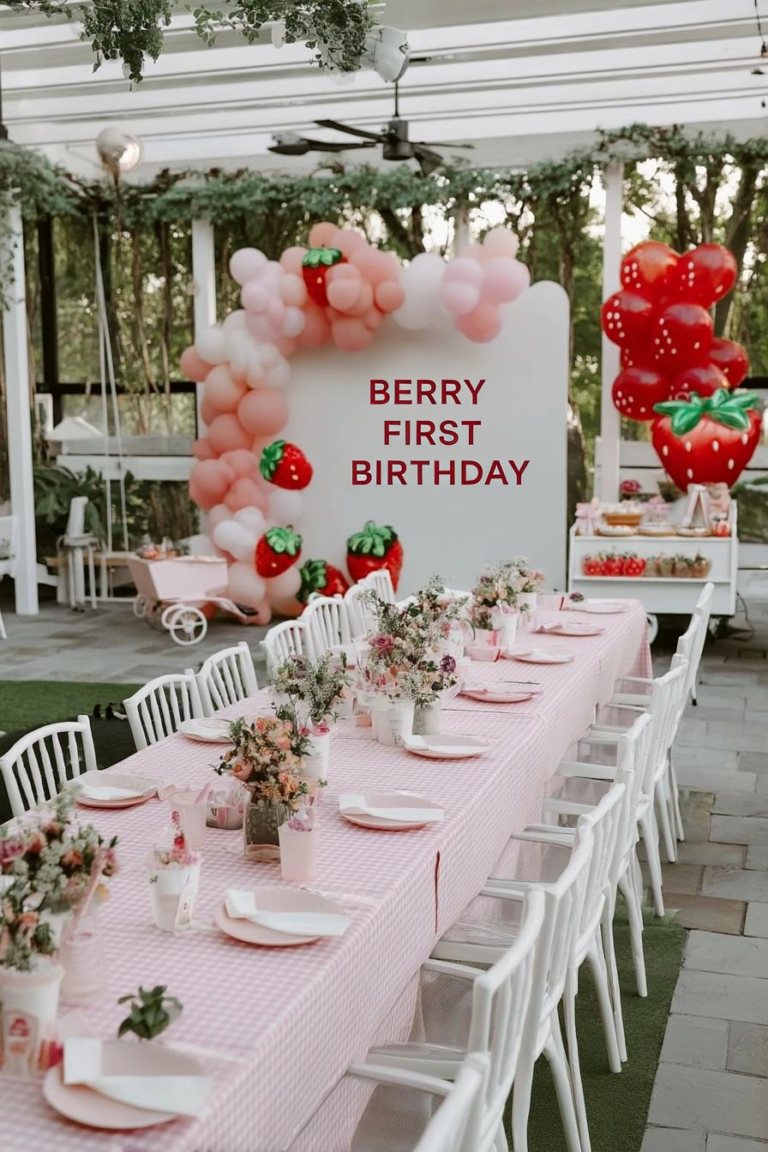Infant sensory activities are such a wonderful way to nurture that curiosity and bond. Let’s explore some simple, joyful ideas you can try today!
15 Mind-Blowing Infant Sensory Activities You Need to Try Today!
1.Bright Colors & Shapes
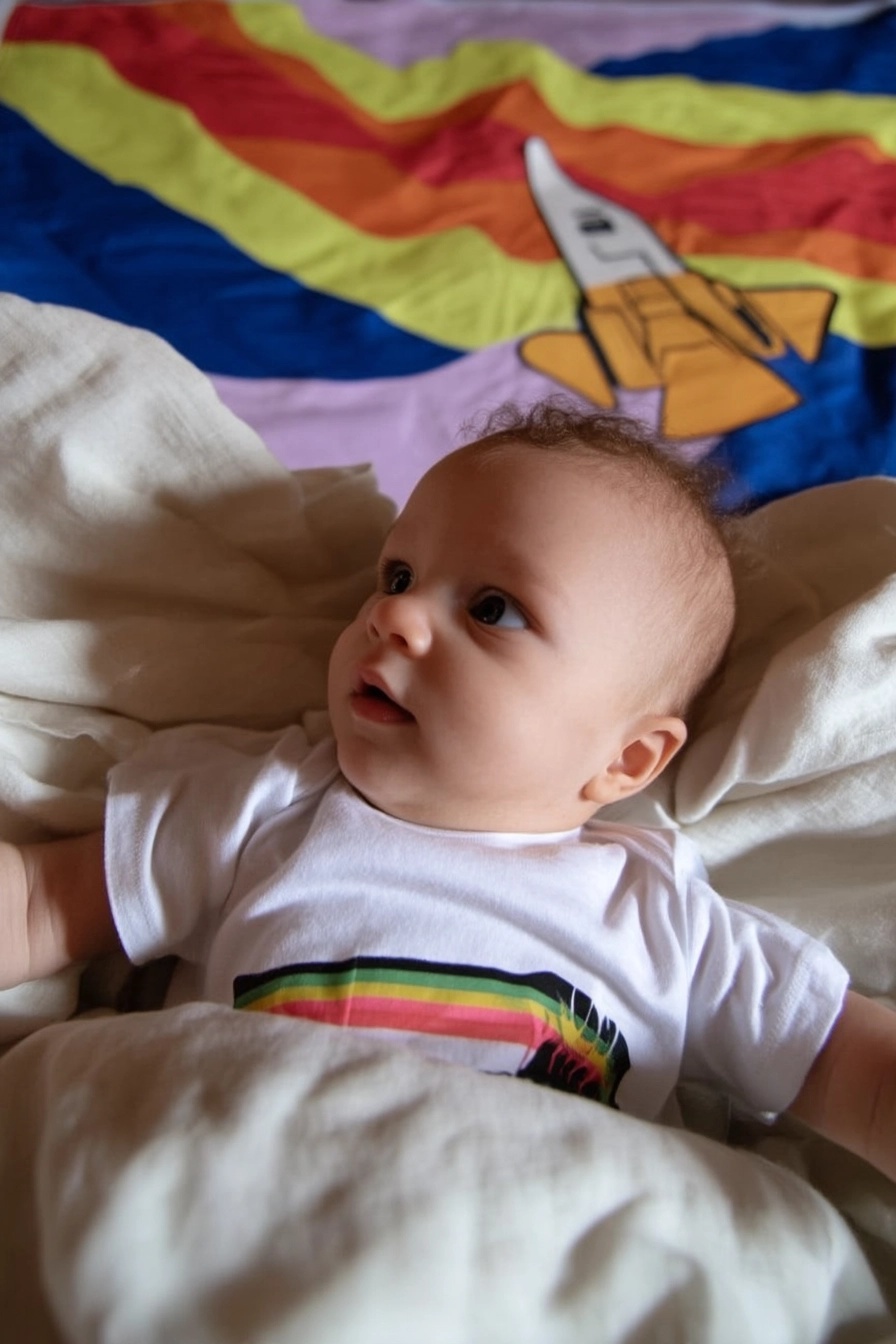
Even the simplest things can be fascinating for a baby! Look at this little one, totally captivated by the bright colors and shapes above.
Hang colorful mobiles (safely out of reach!), use brightly patterned blankets for floor time, or even just wear a vibrant shirt. Bold colors, especially with contrast, are great for their developing vision.
It helps them practice focusing and tracking objects. Plus, it’s just sweet watching them soak it all in!
2. Balls
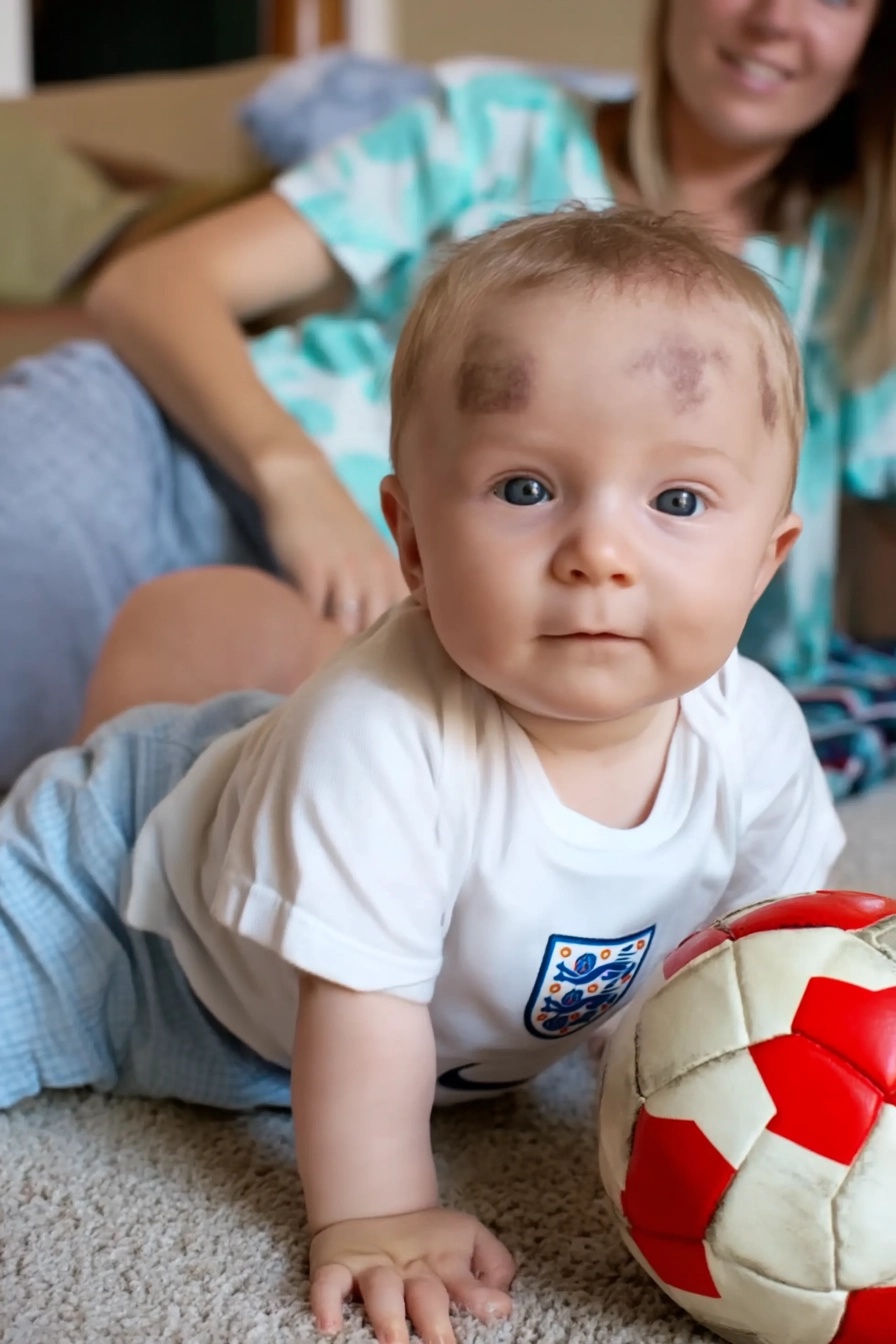
It’s so important for building strength, but let’s be honest, it can lead to a few tumbles and bumps! This little trooper seems unfazed, though.
Make it more interesting by placing engaging toys nearby, like this soccer ball. A mirror or a textured mat can also help keep their attention.
Getting down on their level and talking to them encourages them too. Remember, short, frequent sessions are often better than one long, frustrating one. And don’t worry too much about minor bumps – they’re part of learning!
3. High-Contrast Cards
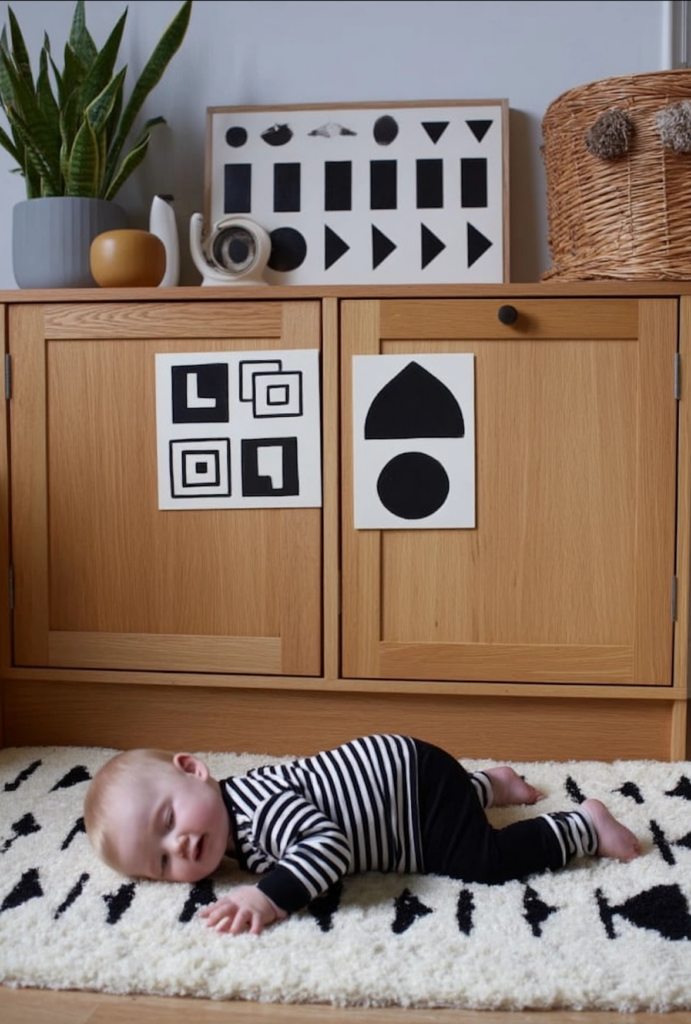
For the youngest babies (0-3 months or so), black and white is where it’s at! Their color vision isn’t fully developed, so high-contrast images really grab their attention.
Taping simple black and white shapes or patterns low on furniture, like this setup, is brilliant for tummy time. It gives them something specific and stimulating to focus on.
It encourages head lifting and strengthens those neck muscles. You can easily make these yourself with paper and a black marker – simple and super effective infant sensory play!
4. Window Gazing with a DIY Sensory Bag
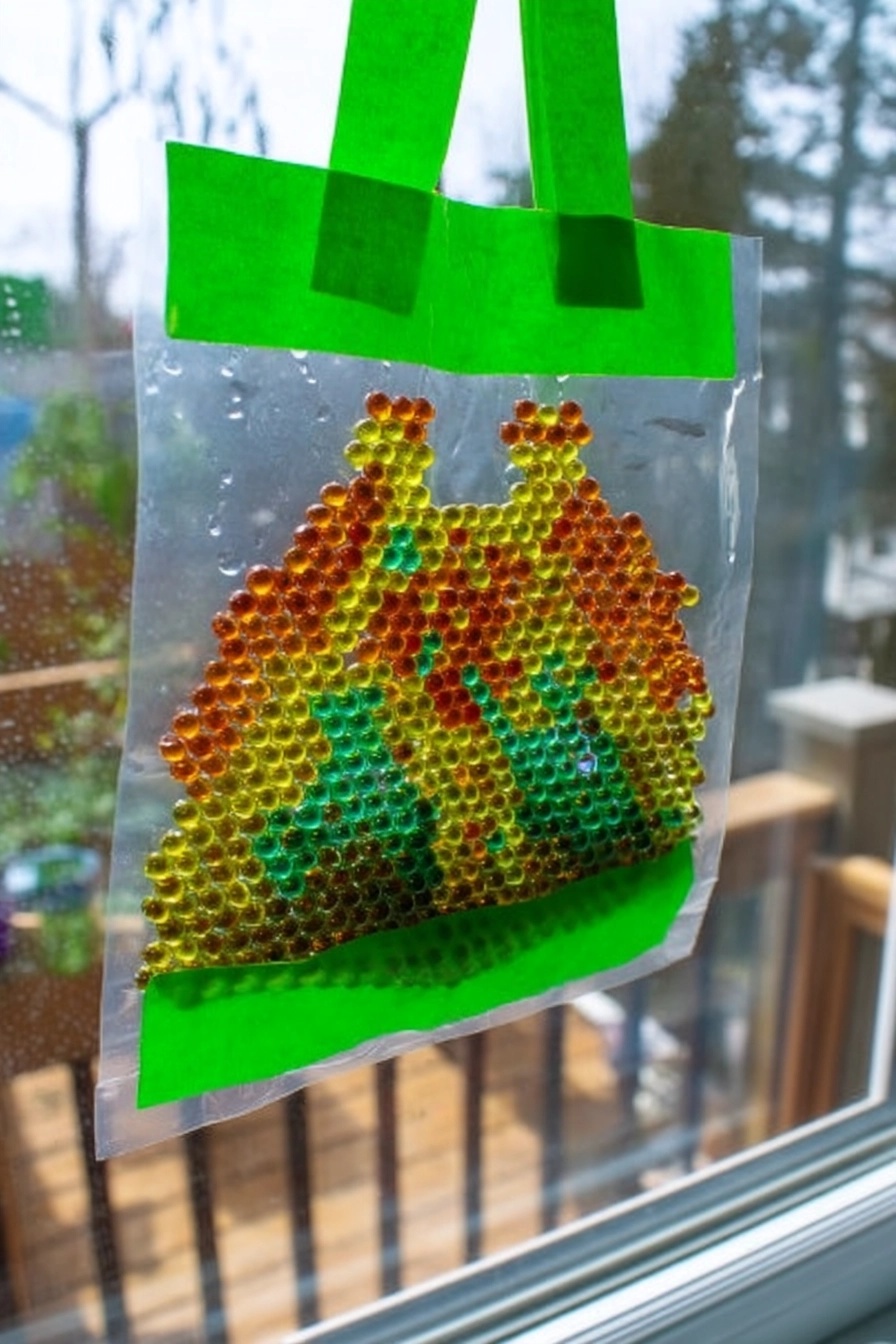
Combine tactile fun with visual wonder! This DIY sensory bag uses water beads, and taping it to a window lets the sunlight shine through beautifully.
Use a sturdy zip-top bag (or double bag it!), fill with water beads, hair gel, or oil and water. Then seal it REALLY well with strong tape on all sides.
The light catching the colors is mesmerizing. It’s great for visual tracking and supervised tactile exploration (patting the bag). Safety Note: Ensure the seal is perfect and always supervise, as water beads are not safe if ingested.
5. Squishy, Goopy Gel Bag Fun
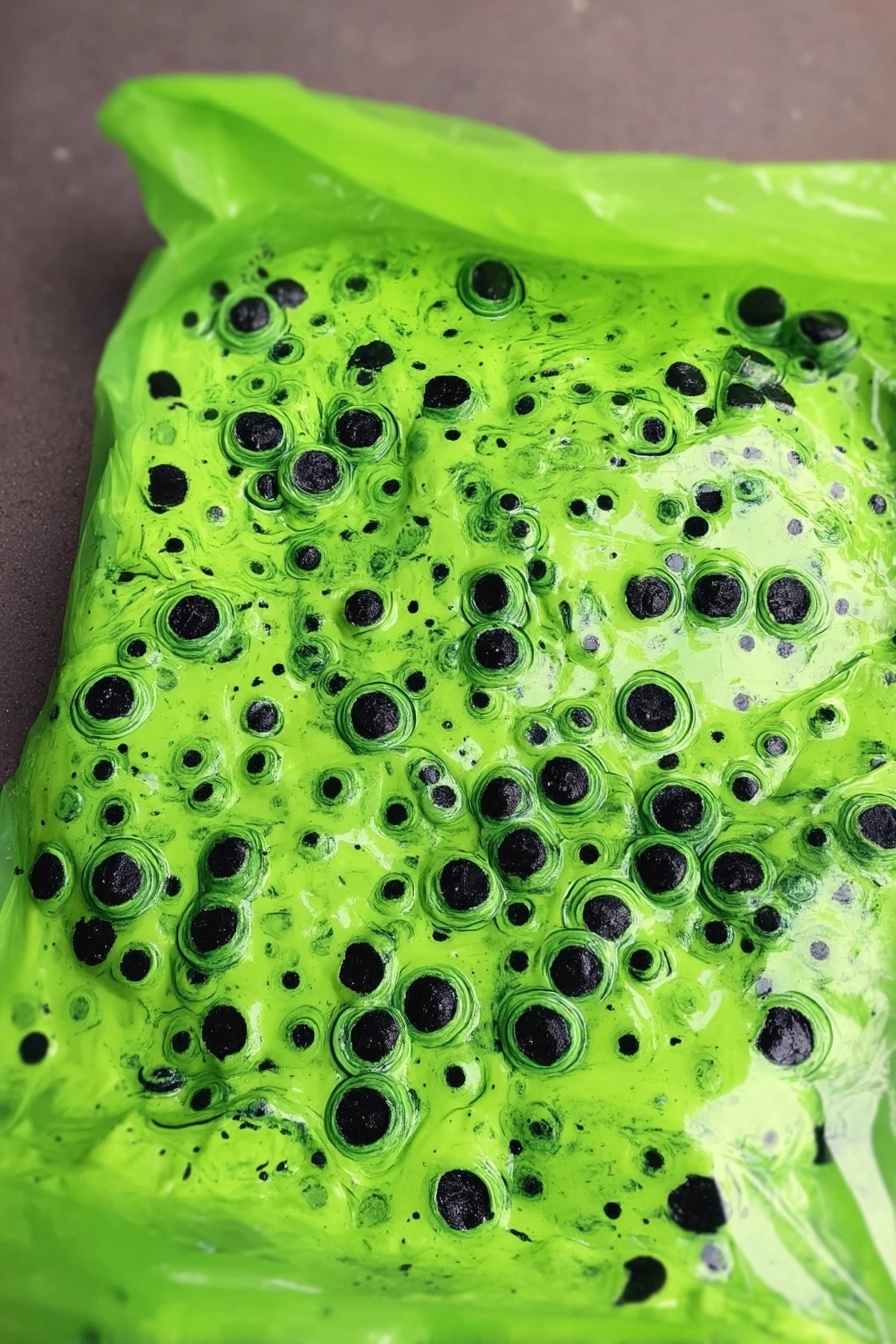
Sensory bags offer all the squishy fun without the messy cleanup! This one looks like hair gel mixed with dark beads or buttons.
The contrast between the bright green gel and the dark objects makes it visually interesting. Babies love the feeling of pushing the gel and items around inside the bag.
Perfect for high chair time or taping to the floor for tummy time exploration. Just remember: double bag and use strong tape to seal all edges securely!
6. Little Hands Exploring Textures
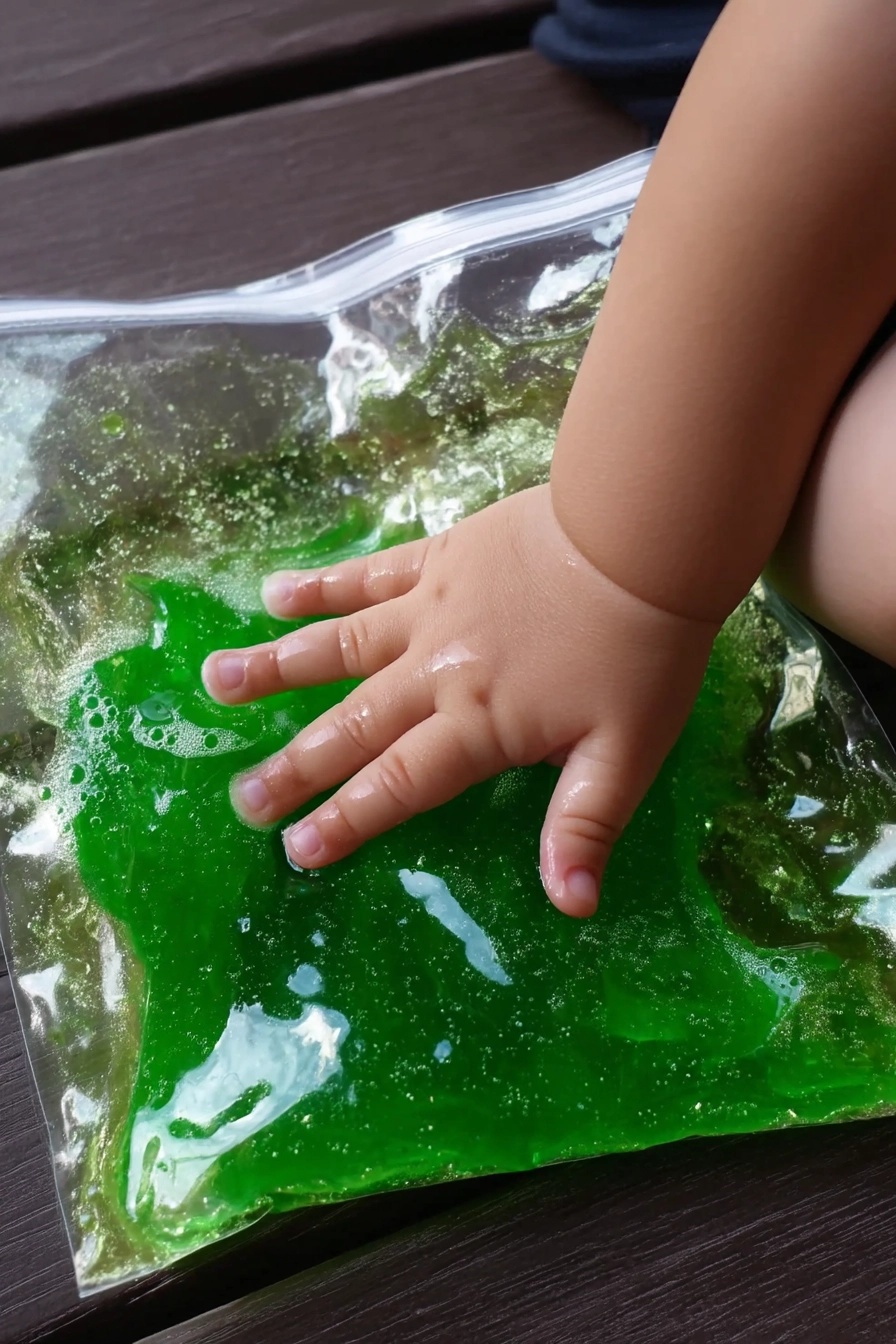
There it is – that satisfying squish! Feeling the cool gel move under their fingers through the plastic is a fantastic tactile experience for babies.
These bags are so versatile. You can fill them with:
- Hair gel and glitter
- Shaving cream (use sparingly, supervise closely)
- Water and oil with food coloring
- Small, safe objects suspended in gel
It encourages fine motor skills as they poke and prod, and teaches cause and effect. A brilliant, easy infant sensory activity.
7. DIY Twinkle Light Sensory Box
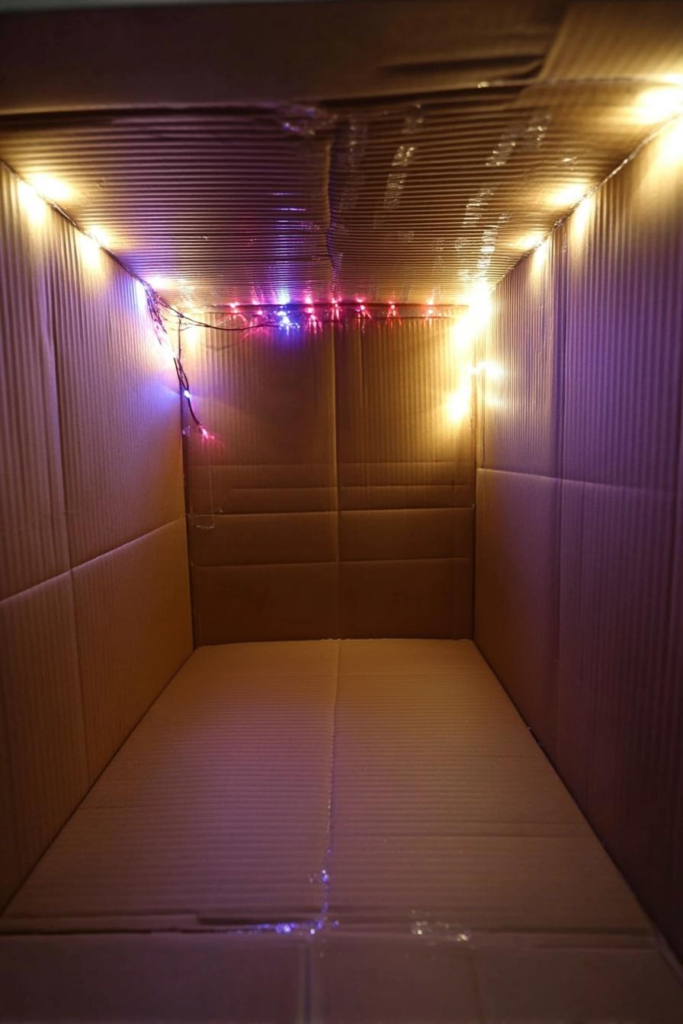
Turn an ordinary cardboard box into a magical light den! Simply (and safely) tape some battery-operated fairy lights inside.
Place baby inside (if sitting) or let them look in during tummy time. The soft, focused lights are captivating in the darker space of the box.
Important Safety Rules: Use only LED lights that stay cool, ensure the battery pack is secure and inaccessible, check for loose wires, and never leave baby unattended. It’s a high-impact visual activity!
8. Rainbow Fiber Sensory Bag
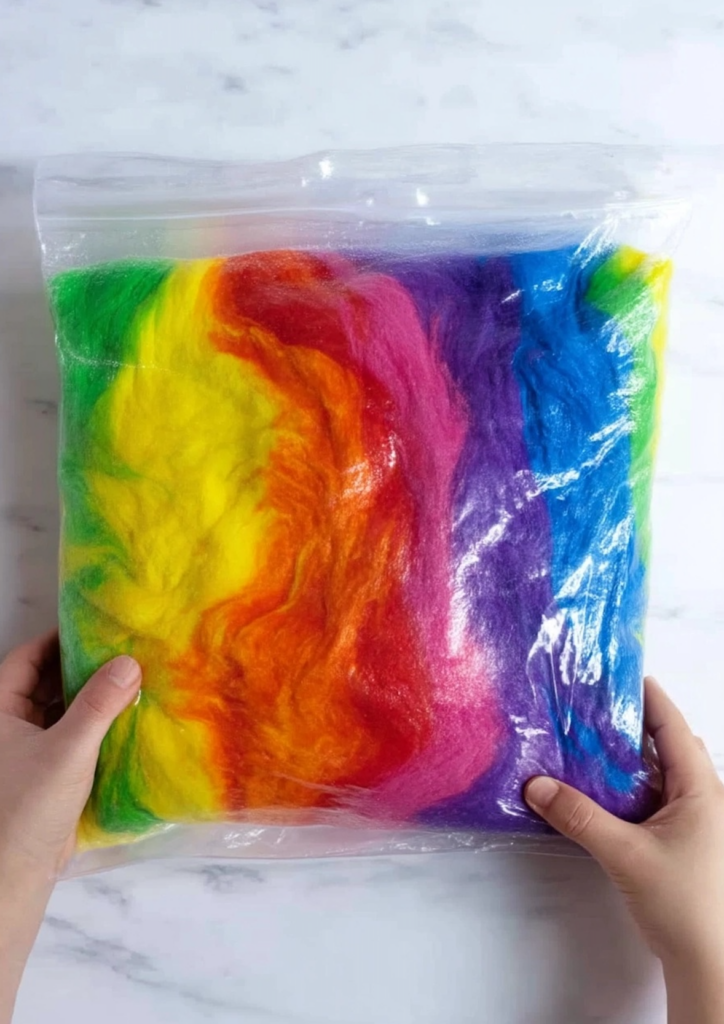
Another sensory bag idea, this time focusing on soft texture and vibrant color! This bag is filled with fluffy wool roving.
Babies can squish the bag and feel the unique texture of the wool without any loose fibers getting near their mouth. The rainbow colors are visually stunning too.
You could also use cotton balls, felt pieces, or different types of yarn. Seal it up tight and let them explore the colors and softness.
9. Mirror Magic & Mobile Gazing Station
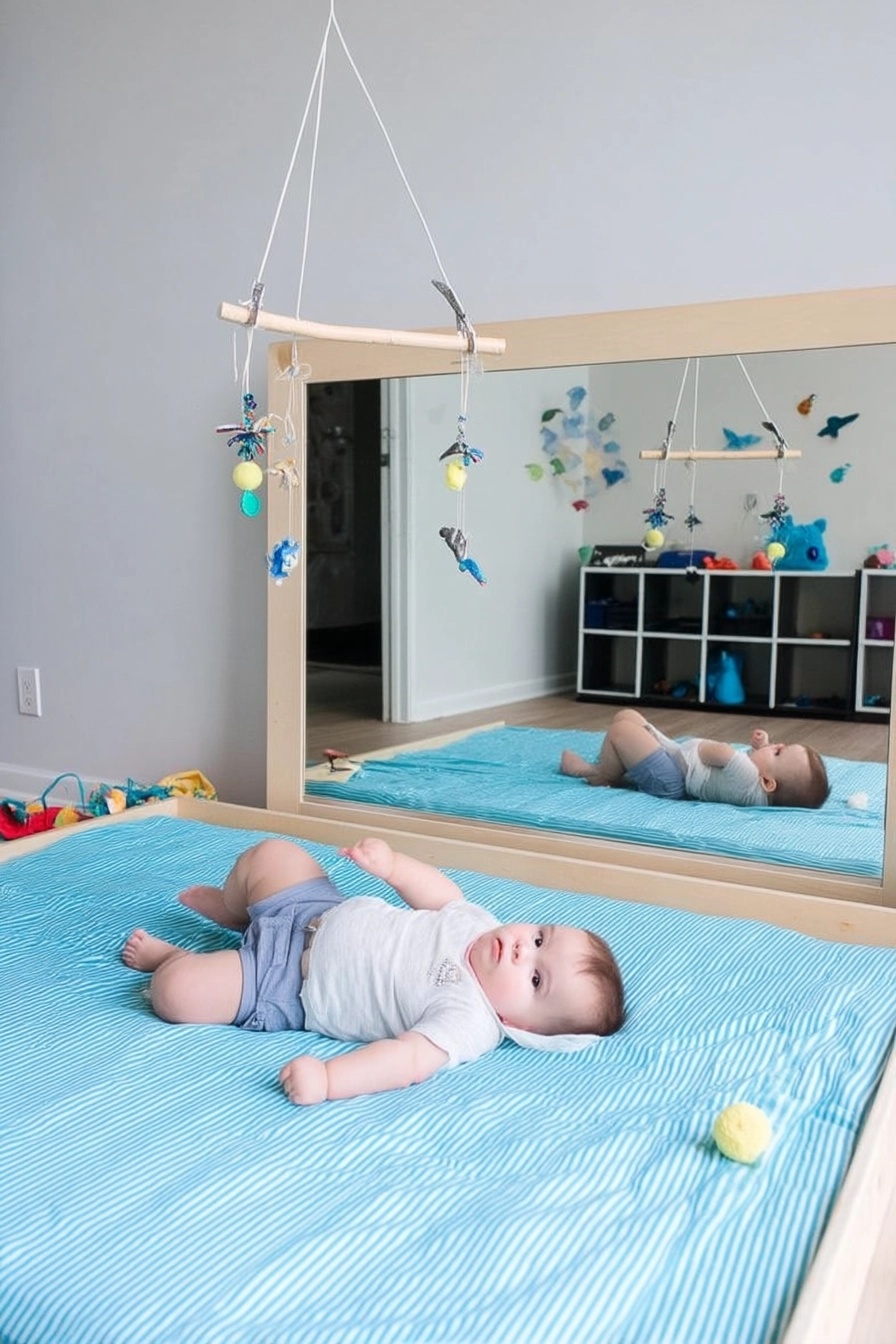
Babies are naturally drawn to faces, including their own! A baby-safe mirror is a must-have sensory tool.
This setup combines mirror play with a captivating mobile. The baby gets double the visual interest – the mobile itself and its reflection, plus their own face!
Mirror play encourages self-recognition and social-emotional development. They might coo, smile, or try to interact with the “baby” in the mirror. It’s fantastic for their developing brain.
10. Umbrella Sensory Den
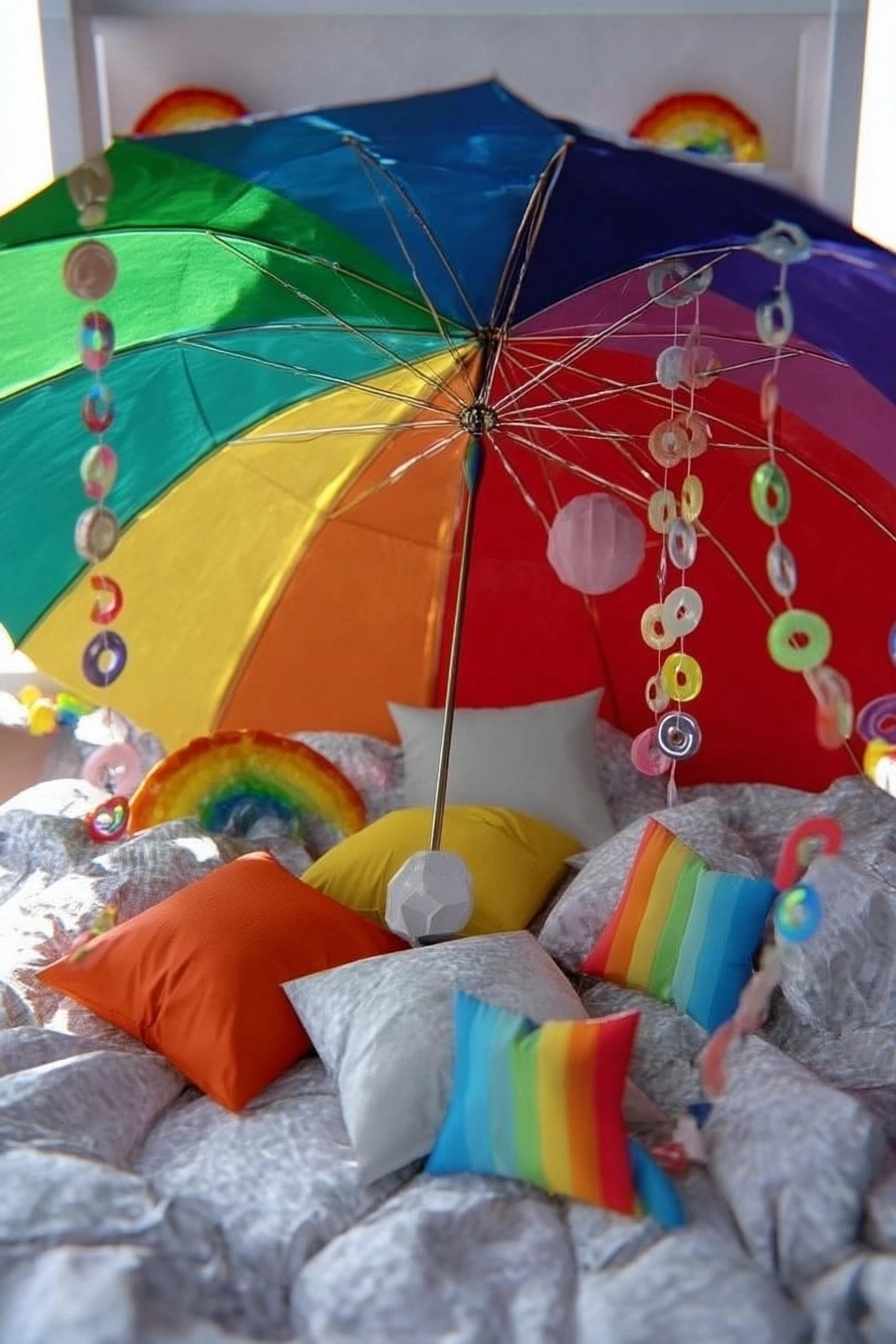
Create an instant cozy hideaway! An open umbrella (especially colorful one) makes a perfect little den.
Fill the space underneath with soft pillows and blankets. You can hang lightweight sensory items like ribbons, soft toys, or CDs from the spokes for added interest.
It creates a defined, comforting space for quiet exploration or just chilling out. A lovely way to make sensory time feel extra special and contained.
11. High-Contrast Cotton Ball Bag
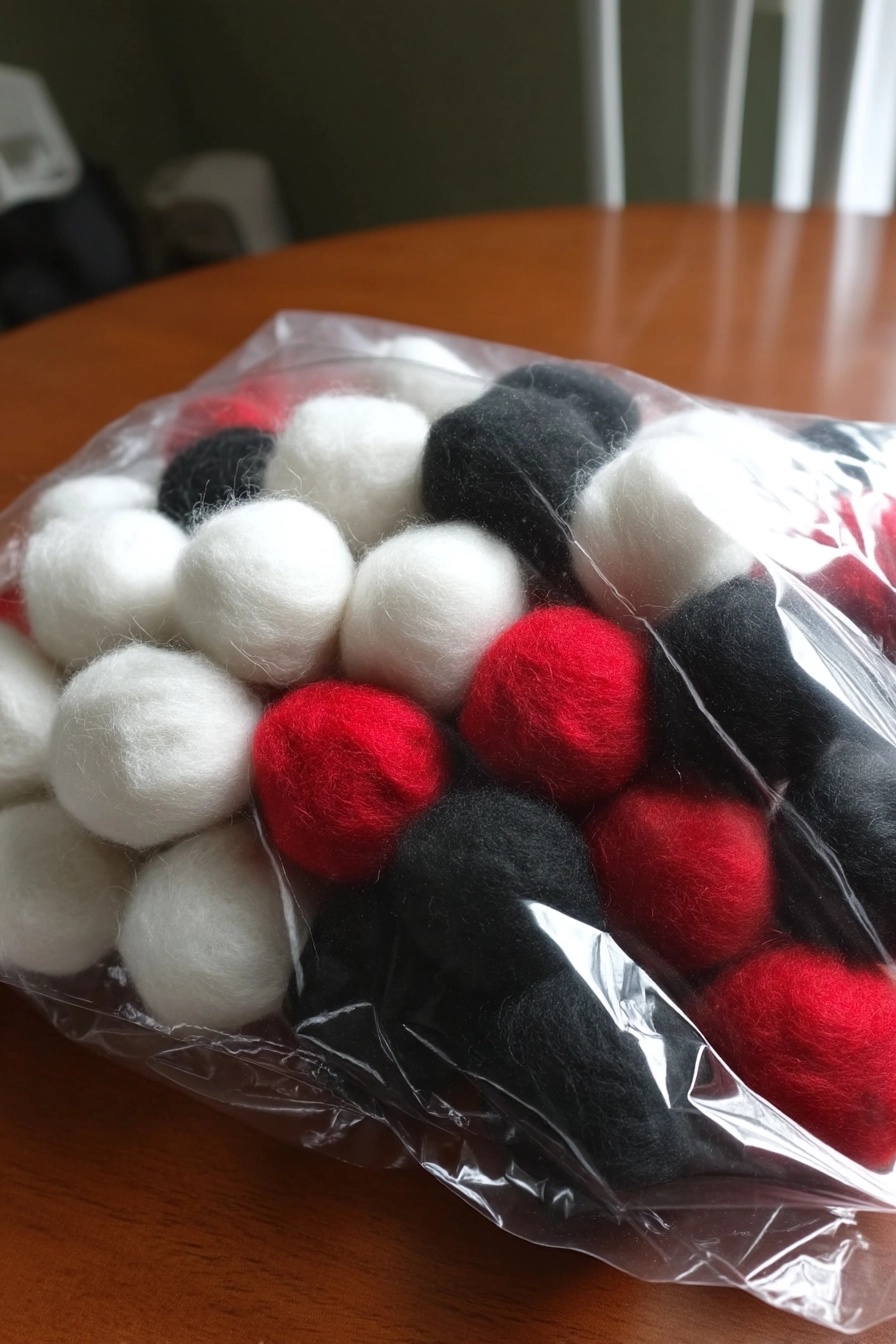
Simple, soft, and visually striking! This sensory bag uses large pom-poms in high-contrast colors: red, white, and black.
The large size makes them safer if the bag were ever to accidentally open (but always supervise!). The contrasting colors are great for younger babies’ vision.
Feeling the soft, yielding texture of the pom-poms through the bag is a gentle tactile experience. Another easy and inexpensive DIY win!
12. Taste-Safe Ocean Rescue Bin
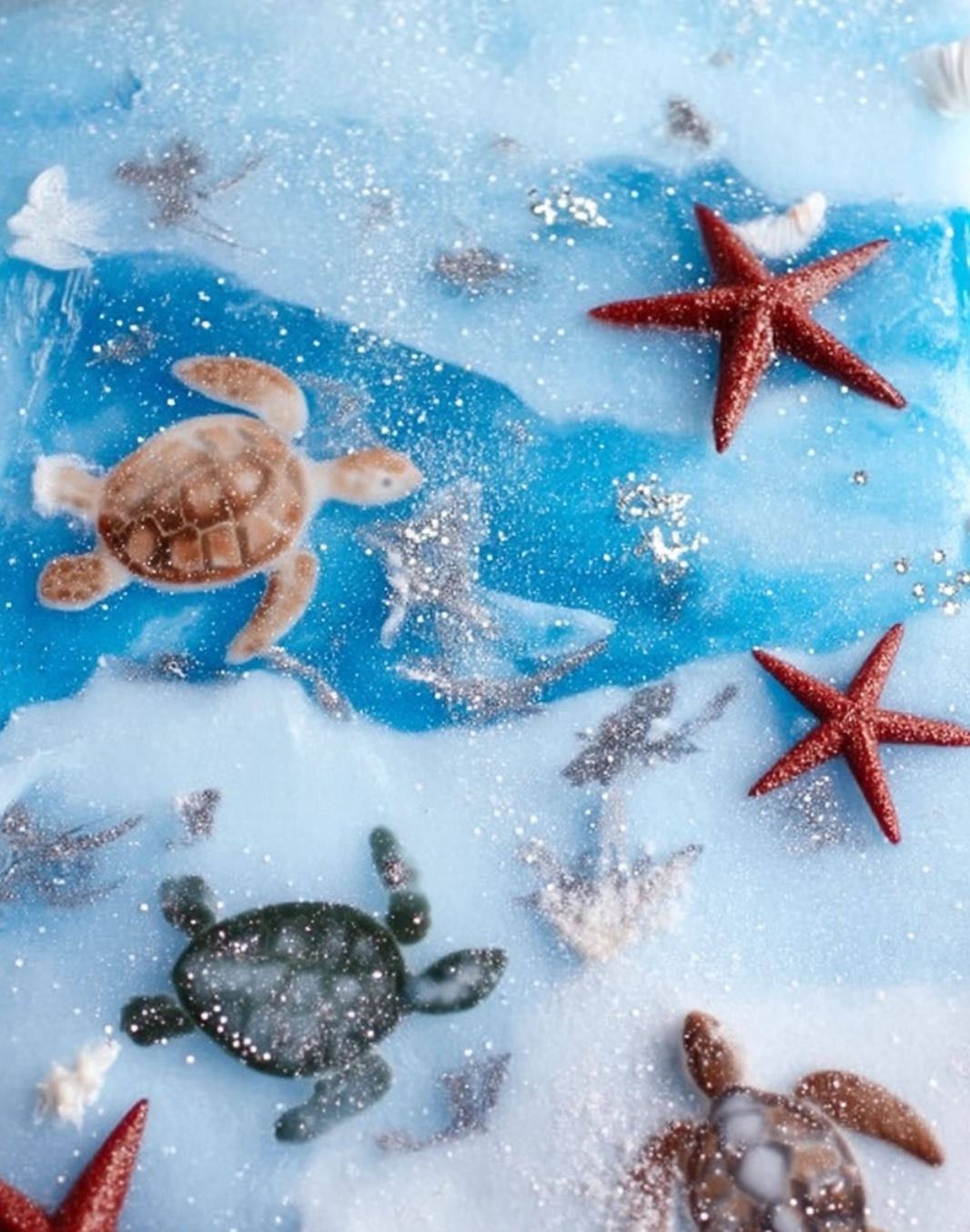
Dive into sensory fun with a taste-safe bin! This amazing ocean scene looks like it’s made from blue gelatin with added edible glitter.
Hiding plastic sea creatures inside adds an element of surprise and encourages poking and digging (great for fine motor skills!).
Remember: Even taste-safe requires constant supervision to prevent choking or eating too much. Be ready for mess, but the cool, jiggly texture is usually a huge hit!
13. Gentle Balloon Fascination (Handle with Care!)

Balloons seem simple, but their slow, floaty movement is captivating for babies. Look at that happy face!
Letting them gently bat at a balloon or watch it drift is great for visual tracking. This shiny mylar type is often a bit safer than latex.
14. Cuddly Friends with Interesting Textures

Don’t forget the classics! A good soft toy with varied textures is a sensory powerhouse.
Look for toys with different fabrics (ribbed, plush, smooth), crinkly parts, tags, or gentle sounds. This colorful yarn toy looks perfect for little hands to explore.
Beyond texture, cuddling a soft toy provides comfort and security. It’s a simple, essential part of infant sensory development.
15. Reaching for Rainbow Ribbons
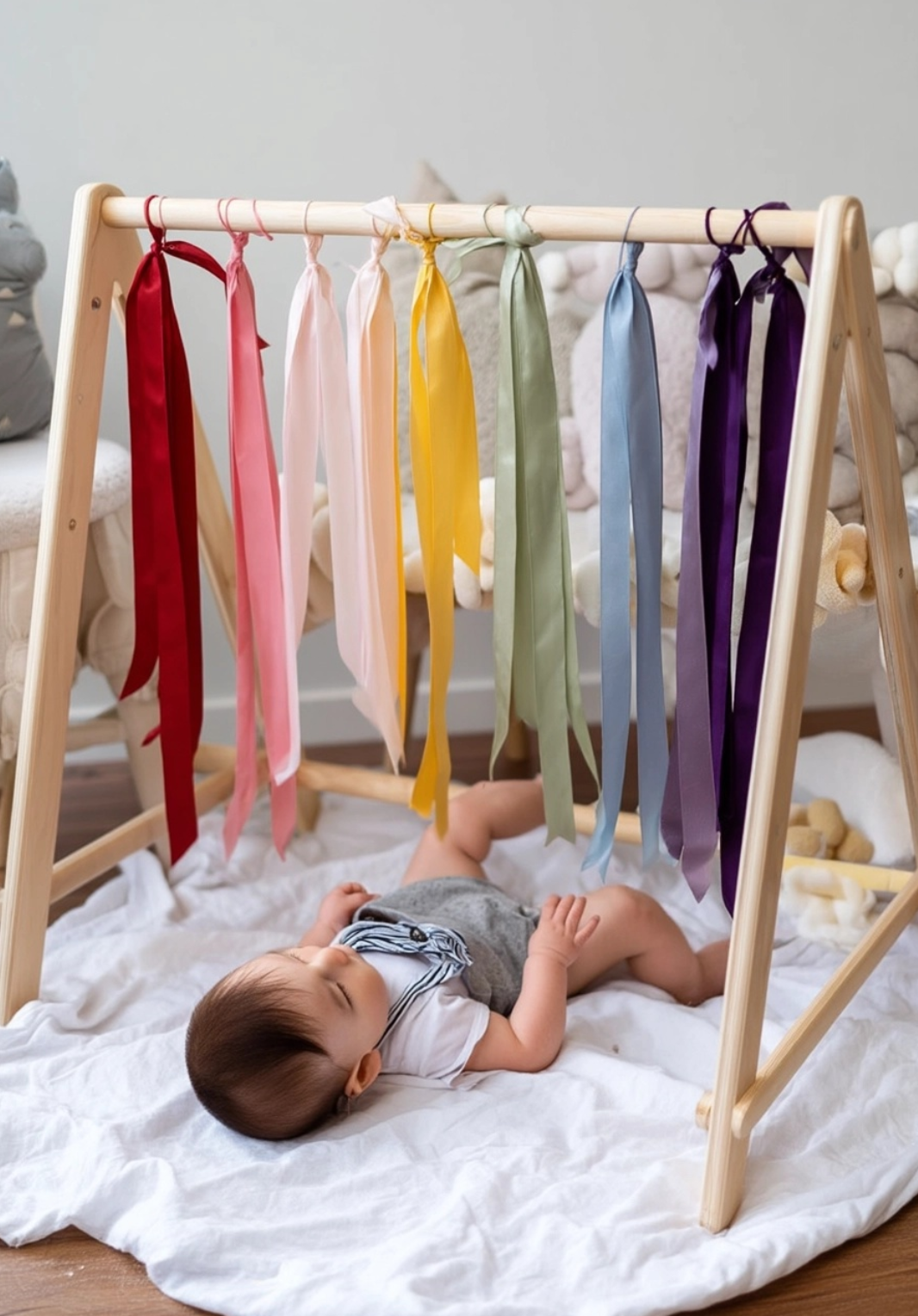
Wooden play gyms are fantastic, and adding silky ribbons makes them even better! Look how inviting these rainbow ribbons are.
Lying underneath, baby can gaze up at the colors and movement, or reach out to touch the smooth fabric. It encourages visual tracking, reaching, and grasping.
Make sure ribbons are securely tied and cut to a safe length (too short to wrap around body parts). It’s an easy way to customize a play gym.
FAQ:
How can I easily make sensory activities at home for my infant?
You can create simple DIY sensory experiences using household items! Think textured fabrics scraps in a basket, a securely sealed bottle with colorful beads or rice for sound, or even safe kitchen utensils like whisks and wooden spoons to explore. Always supervise closely and ensure all items are baby-safe and too large to be a choking hazard.
Are sensory activities suitable for newborns or very young infants (0-3 months)?
Absolutely, sensory activities are wonderful even for the youngest infants, starting from birth! Focus on gentle stimulation like soft fabric textures against their skin during tummy time, high-contrast black and white images for visual tracking, or soothing sounds like lullabies or your voice. Keep sessions short and watch your baby’s cues for engagement or overstimulation.
Why is sensory play important for babies?
Sensory play is crucial for infant development as it helps build nerve connections in the brain’s pathways, laying the foundation for more complex learning later. Exploring different sights, sounds, textures, and movements helps babies understand their world, develop motor skills, and even supports cognitive and language growth. It’s essentially how babies learn through active exploration!
